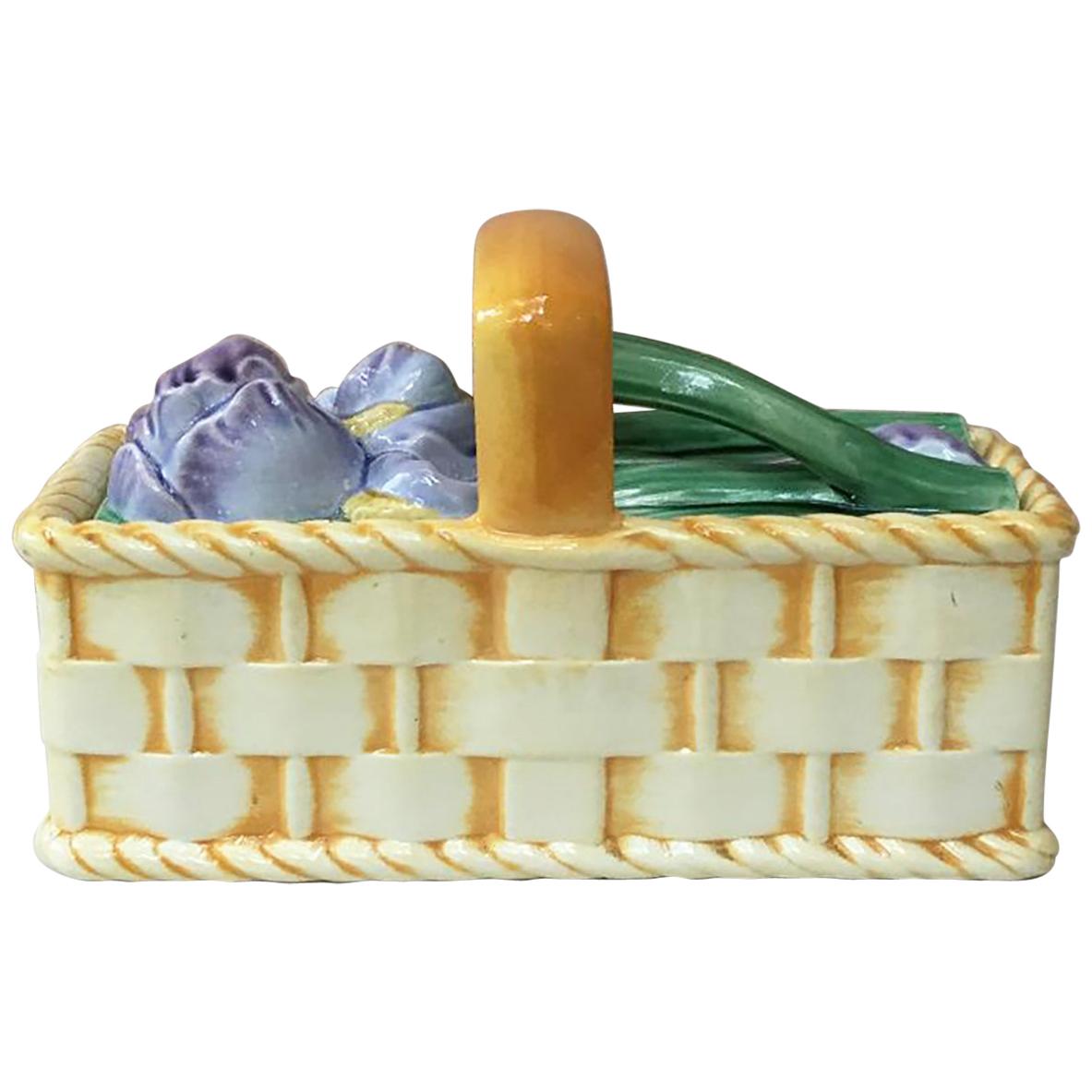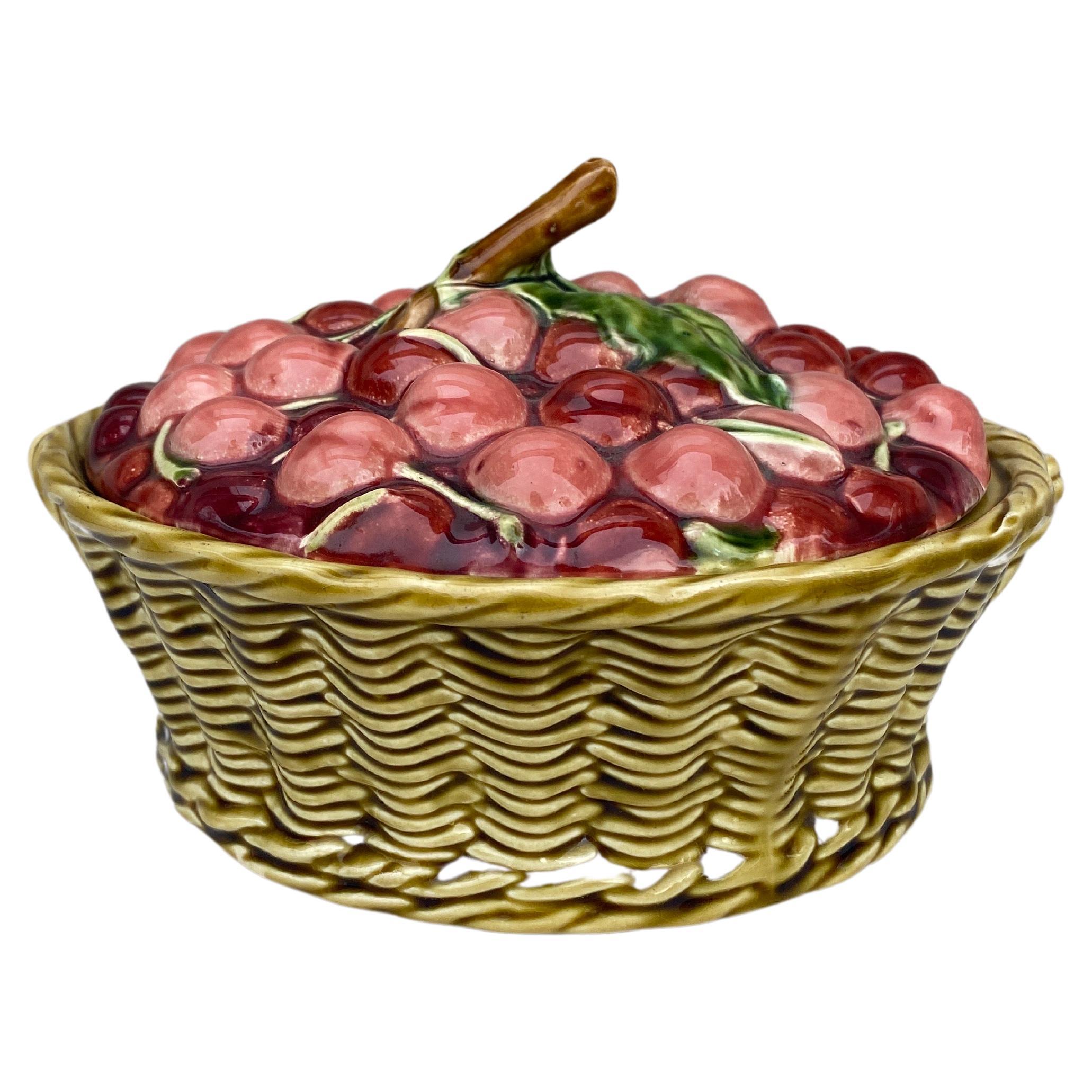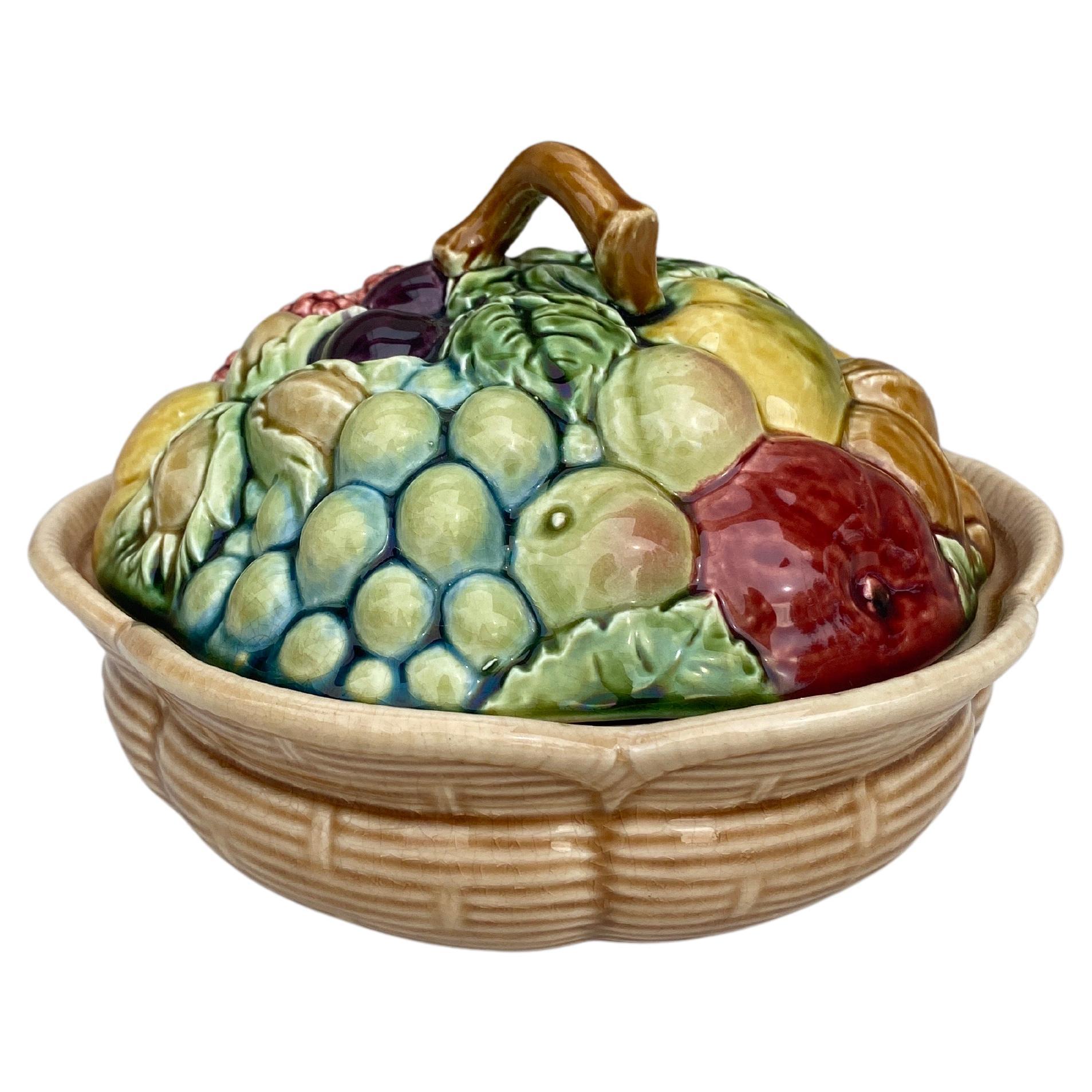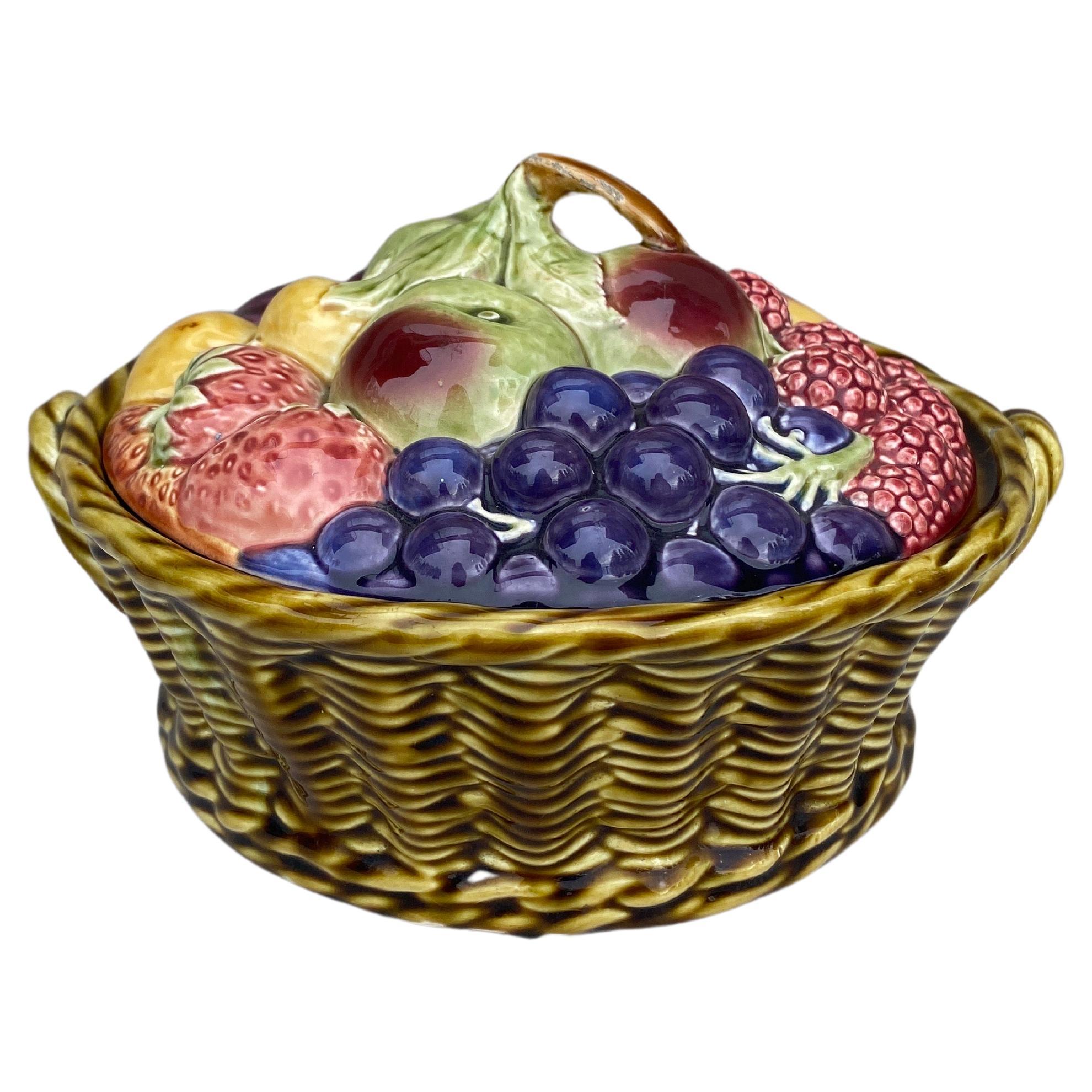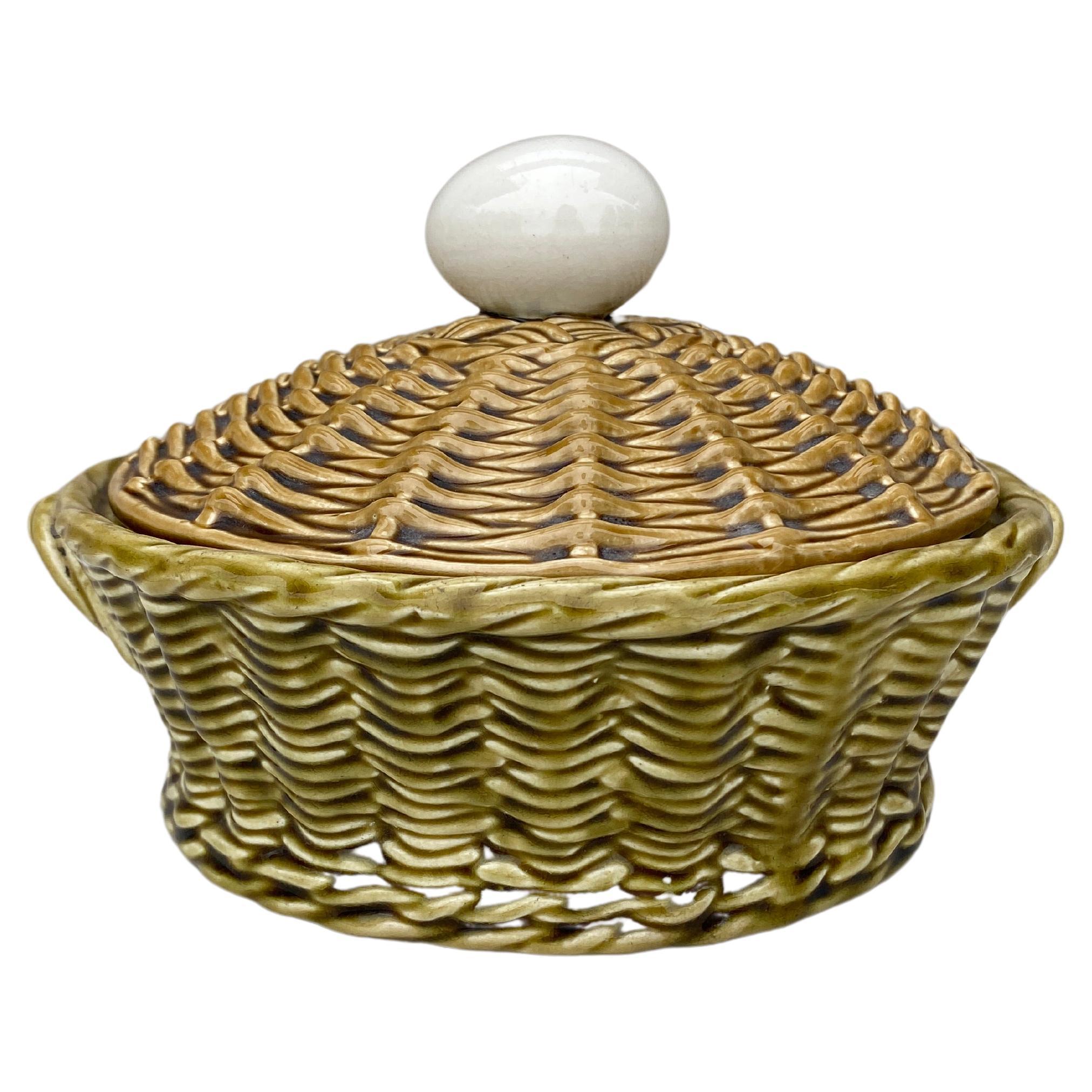Items Similar to Majolica Pansies Basket Sarreguemines, circa 1920
Want more images or videos?
Request additional images or videos from the seller
1 of 6
Majolica Pansies Basket Sarreguemines, circa 1920
About the Item
Large Oval Majolica basket with pansies flowers signed Sarreguemines, circa 1920.
- Creator:Sarreguemines (Manufacturer)
- Dimensions:Height: 6.5 in (16.51 cm)Width: 12 in (30.48 cm)Depth: 8 in (20.32 cm)
- Style:Art Nouveau (In the Style Of)
- Materials and Techniques:
- Place of Origin:
- Period:
- Date of Manufacture:1920
- Condition:
- Seller Location:Austin, TX
- Reference Number:1stDibs: LU2379331687732
About the Seller
5.0
Platinum Seller
These expertly vetted sellers are 1stDibs' most experienced sellers and are rated highest by our customers.
Established in 1995
1stDibs seller since 2016
1,508 sales on 1stDibs
Typical response time: <1 hour
- ShippingRetrieving quote...Ships From: Austin, TX
- Return PolicyA return for this item may be initiated within 1 day of delivery.
More From This SellerView All
- Majolica Iris Basket Sarreguemines, circa 1920By SarregueminesLocated in Austin, TXLarge Majolica basket with iris flowers signed Sarreguemines, circa 1920.Category
Vintage 1920s French Art Nouveau Decorative Baskets
MaterialsCeramic, Faience
- Majolica Fruits Basket Sarreguemines, circa 1920By SarregueminesLocated in Austin, TXMajolica Fruits Basket Sarreguemines, circa 1920. Raspberries.grapes,pears,apples,strawberries,plums.Category
Vintage 1920s French Country Decorative Baskets
MaterialsCeramic
- Majolica Egg Basket Sarreguemines, circa 1920By SarregueminesLocated in Austin, TXMajolica Trompe l'oeil basket with egg handle signed Sarreguemines, circa 1920. This basket is the largest model, the piece exist in smaller size.Category
Vintage 1920s French Country Decorative Baskets
MaterialsMajolica
- Majolica Fruits Basket Sarreguemines, circa 1920By SarregueminesLocated in Austin, TXMajolica Fruits Basket Sarreguemines, circa 1920. Raspberries.grapes,pears,apples,strawberries,plums,nuts.Category
Vintage 1920s French Country Decorative Baskets
MaterialsCeramic
- Majolica Cherries Basket Sarreguemines, circa 1920By SarregueminesLocated in Austin, TXMajolica cherries Basket Sarreguemines, circa 1920.Category
Vintage 1920s French Country Decorative Baskets
MaterialsCeramic
- Majolica Cherries Oval Basket Sarreguemines, circa 1920By SarregueminesLocated in Austin, TXMajolica Cherries oval basket signed Sarreguemines, circa 1920. Lenght / 14.3 on 8" ,Height / 2.3 inches.Category
Vintage 1920s French Rustic Decorative Baskets
MaterialsPottery, Majolica, Faience, Ceramic
You May Also Like
- Sarreguemines French Majolica Twin Handle Bird Mounted Pottery BowlBy SarregueminesLocated in Bishop's Stortford, HertfordshireA rare and stunning French majolica twin handled pottery bowl applied with birds by renowned maker Sarreguemines and dating from the latter 19th century. The rounded bowl stands raised on four half ball shaped feet with a basket weave styled design. The rounded bowl is applied with decorative panels in low relief with leaf and stem handles to either side and with birds, their wings out spread, perched on a scorlling vine. The bowl has a raised rim with gothic style pierced panels and is richly hand painted in tones of brown, green, red, yellow, white and black. The inner bowl and base applied with bright turquoise glazes. The bowl is numbered 537 and has impressed SARREGUEMINES and MAJOLICA marks...Category
Antique 19th Century French Aesthetic Movement Ceramics
MaterialsPottery
- Art Nouveau Majolica Vase by Sarreguemines, FranceBy SarregueminesLocated in Bad Säckingen, DEThis antique Art Nouveau double-handled majolica ceramic vase features a beautifully embossed floral motif and was made by the famous French manu...Category
Antique Early 1900s French Art Nouveau Vases
MaterialsCeramic
- English Majolica Basket Mottled Green Cobalt Handle Lavender Interior, ca. 1875Located in Banner Elk, NCEnglish Majolica basket with mottled green basketweave, a cobalt blue handle, and lavender interior, ca. 1875, Measures: W 6 x H 4 x D 1.5 inches For 30 years we have been among th...Category
Antique 19th Century English Victorian Decorative Baskets
MaterialsMajolica
- Early William Moorcroft Pottery Large Dish in Pansy Pattern, circa 1928By William MoorcroftLocated in Lincoln, LincolnshireThis is a very good early example of a large diameter dish made by William Moorcroft, of Moorcroft Pottery in the Pansy pattern and dating to circa 1928. The pattern is known as P...Category
Early 20th Century English Art Deco Decorative Bowls
MaterialsPottery
- Two Pairs of Italian Maiolica Baskets, circa 1780By Antonio FerrettiLocated in Milano, ITTwo pairs of maiolica baskets Antonio Ferretti Manufacture Lodi, circa 1770-1790 Maiolica polychrome decorated “a piccolo fuoco” (third fire). Measures: A) Height 3.54 x 6.69 x 9.84 in (9 x 17 x 25 cm); B) Height 3.93 x 7.48 x 11.02 in (10 x 19 x 28 cm). Total weight 4.85 lb (2.200 kg) State of conservation: A) One of the smaller baskets has some areas of restoration, the other slight chipping from use; B) One of the larger baskets is intact and the other shows a clearly glued break. The mold with which the baskets were forged simulates a wicker weave. The two larger works have high, vertical walls, with branch-shaped handles penetrating the weave. The painted decorations, small polychrome flowers applied only externally, highlight the points where the weaves intersect. The decision to leave the center of the basket devoid of decoration is highly unusual, but given the size and complexity of the shape, as well as the quality of the enamel, it is possible to hypothesize that it represents a precise choice in manufacturing or for a particular client. The two smaller baskets have small, twisted handles and, on the outside, reproduce more decisively the characteristic wicker weave, obtained through thin molded lines. The interior exhibits a rich, typical decoration of naturalistic flowers: a bunch centered around a main flower and secondary stems accompanied by small “semis”. The exterior of these works is also adorned with small little flowers where the weaves intersect. The size and morphological characteristics of the baskets confirm their attribution to the Lodi factory of Antonio Ferretti between 1770 and 1790, during its most successful period; by this point his original reworking of the "Strasbourg" decoration, known as "old Lodi", had achieved great fame even outside Italy. This decorative choice represented a strong point of the Lodi factory, which established itself thanks to the vivid nature of the colors made possible by the introduction of a new technique perfected by Paul Hannong in Strasbourg and which Antonio Ferretti introduced in Italy. This production process, called “piccolo fuoco” (third fire), allowed the use of a greater number of colors than in the past; in particular, the purple of Cassius, a red made from gold chloride, was introduced. Its use allowed for many more tones and shades, from pink to purple. The Ferretti family had started their maiolica manufacturing business in Lodi in 1725. The forefather Simpliciano had started the business by purchasing an ancient furnace in 1725 and, indeed, we have evidence of the full activity of the furnaces from April of the same year (Novasconi-Ferrari-Corvi, 1964, p. 26 n. 4). Simpliciano had started a production of excellence also thanks to the ownership of clay quarries in Stradella, not far from Pavia. The production was so successful that in 1726 a decree of the Turin Chamber came to prohibit the importation of foreign ceramics, especially from Lodi, to protect internal production (G. Lise, La ceramica a Lodi, Lodi 1981, p. 59). In its initial stages, the manufacture produced maolicas painted with the “a gran fuoco” (double fire) technique, often in turquoise monochrome, with ornamentation derived from compositional modules in vogue in Rouen in France. This was also thanks to the collaboration of painters like Giorgio Giacinto Rossetti, who placed his name on the best specimens next to the initials of the factory. In 1748 Simpliciano made his will (Gelmini, 1995, p. 30) appointing his son Giuseppe Antonio (known as Antonio) as universal heir. After 1750, when Simpliciano passed away, Antonio was directly involved in the maiolica factory, increasing its fortunes and achieving a reputation on a European level. Particularly important was the aforementioned introduction in 1760 of the innovative “a piccolo fuoco” (third fire) processing, which, expanding the ornamental repertoire with Saxon-inspired floral themes, could commercially compete with the German porcelains that had one of its most renowned offerings in the naturalistic Deutsche Blumen. Antonio Ferretti understood and promoted this technique and this decoration, proposing it in a fresher and more corrective version, less linked to botanical tables...Category
Antique 1770s Italian Neoclassical Ceramics
MaterialsMaiolica
- Antique 'Dwarf Elephant Ear' Majolica Plate, Unsigned, U.K., Circa 1880Located in Chatham, ONRare antique Victorian 'dwarf elephant ear' majolica plate - hand painted green and brown tortoiseshell glaze to the center of the plate with a golden yellow border - impressed body ...Category
Antique Late 19th Century British Victorian Decorative Dishes and Vide-P...
MaterialsCeramic
Recently Viewed
View AllMore Ways To Browse
Circa 1920
French 1920 Ceramic
Art Nouveau Majolica
Majolica Nouveau
1920 French Bowls
Majolica Sarreguemines
Sarreguemines Majolica
Sarreguemines France Majolica
Large Pottery Decorative Bowls
Large Basket Oval
French Ceramic Sarreguemines
Large Oval Baskets
Ceramic Flower Basket
Art Nouveau French Pottery
Nouveau French Pottery
Oval Faience
French Ceramic Large Bowls
Ceramic Flower Bowls
